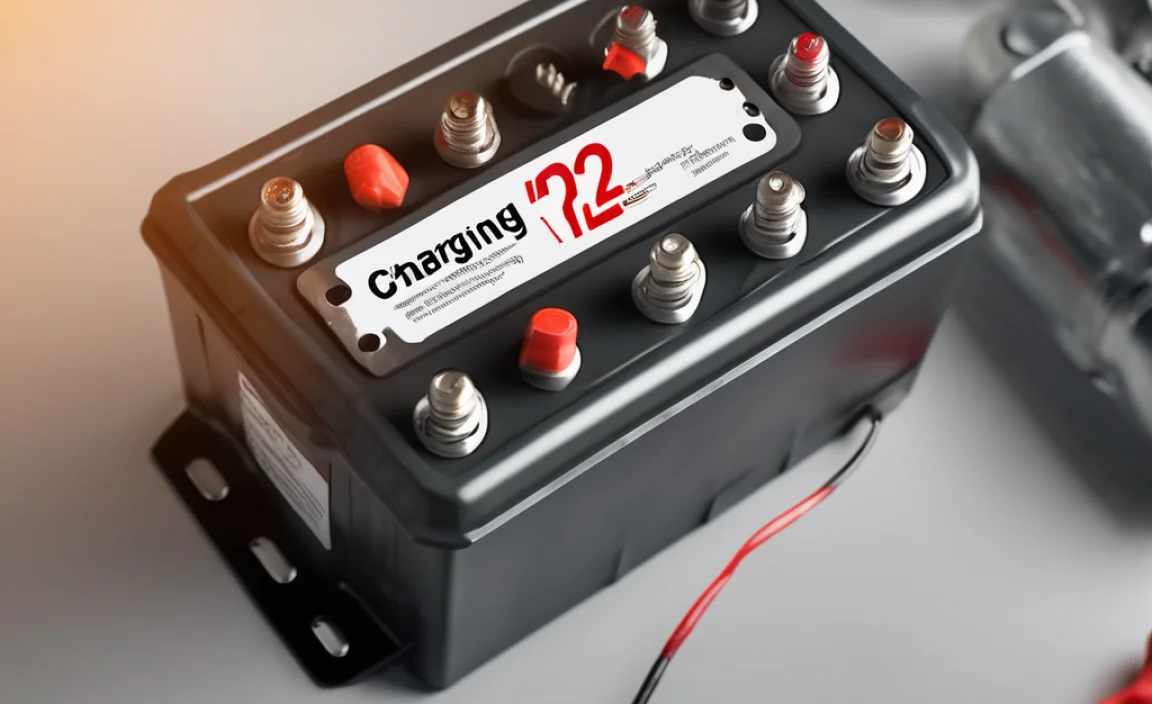Epithelial cells show amazing changes, or modifications, that help them do their specific jobs in your body. These adaptations are like special tools that let them protect you, absorb nutrients, or even secrete important substances.
Ever wonder how your body stays protected from the outside world, or how it so efficiently takes in all the good stuff from your food? It mostly comes down to tiny, hardworking cells called epithelial cells. These cells form thin layers, like a protective lining, all over the place – from your skin to the inside of your stomach. Sometimes, these cells change their shape or features to become extra good at their particular job. It’s a bit like how a screwdriver might have a special tip to fit a unique screw. These changes, or modifications, are proven adaptations that make our bodies work so well. We’ll explore these fascinating cell superpowers and how they help keep us healthy.
What Are Epithelial Cells and Why Do They Change?
Epithelial cells are the busy builders and protectors of your body’s surfaces. They form continuous sheets that cover external surfaces (like your skin) and line internal cavities and tubes (like your digestive tract and airways). Think of them as the body’s first line of defense and its main internal lining crew. Their main role is to protect, absorb, secrete, and sometimes sense things.
But not all jobs are the same, right? If you need to carry a heavy load, you’d want strong arms. If you need to see in the dark, you’d want special eyes. Epithelial cells are the same way! Depending on where they are and what they need to do, they adapt. These adaptations, or modifications, are like special equipment they get to perform their duties efficiently and effectively. Without these changes, many of our body’s essential functions wouldn’t be possible.
The Mighty Modifications: How Epithelial Cells Adapt
Epithelial cells can modify themselves in several ways. These modifications are crucial for specific functions. Here are some of the most common and important ones:
1. Changes in Cell Shape
The basic shape of an epithelial cell can tell you a lot about its job. There are three main types:
- Squamous cells: These are flat, thin, and scale-like. Imagine how a thin, flat tile can cover a large area with minimal overlap. This shape is perfect for places where diffusion or filtration needs to happen quickly, like in the air sacs of your lungs or the lining of blood vessels.
- Cuboidal cells: These cells are box-shaped, with equal height and width. Think of small building blocks. They are common in glands and the lining of tubules, where their primary roles are secretion and absorption.
- Columnar cells: These cells are taller than they are wide, like columns. This shape is often found in areas where absorption and secretion are important, such as the lining of your stomach and intestines. Their height allows for more cellular machinery to be packed in for these tasks.
Sometimes, these shapes can be further modified:
- Stratified Epithelia: This isn’t a change in individual cell shape but how cells areArranged. Instead of a single layer, there are multiple layers stacked on top of each other. This provides extra protection. For example, your skin is made of stratified squamous epithelium – the many layers of flattened cells protect you from physical damage and dehydration.
These shape changes are foundational. They create the structural basis for the specialized roles epithelial cells play.
2. Modifications of the Apical Surface (The “Top” Side)
The apical surface is the free surface of the epithelial cell, facing the outside environment or the lumen of a tube. This is where some of the most dramatic modifications occur, directly enhancing function.
| Modification | Description | Primary Function | Example Locations |
|---|---|---|---|
| Cilia | Hair-like projections that beat in a coordinated wave. | Movement of substances along the epithelial surface. | Lining of the trachea (windpipe) and fallopian tubes. |
| Microvilli | Tiny, finger-like projections that greatly increase surface area. | Enhanced absorption of nutrients. | Lining of the small intestine. |
| Stereocilia | Long, non-motile microvilli. | Absorption or sensory reception. | Epididymis (part of the male reproductive system) and inner ear. |
A Closer Look at Key Apical Modifications:
Let’s dive a bit deeper into what these amazing apical modifications do:
Cilia: The Tiny Oars
Imagine tiny oars rowing in unison. That’s what cilia do! These are microscopic, hair-like structures that extend from the cell surface. When they beat together, they create a current that moves things along. For instance, in your lungs, cilia sweep mucus and trapped debris upwards, away from your lungs, so you can cough it out. In the fallopian tubes, they gently move an egg towards the uterus. The coordinated movement relies on complex protein structures within the cilia, powered by energy (ATP). For more on the molecular machinery of cilia, the National Center for Biotechnology Information (NCBI) offers detailed insights.
Microvilli: The Super-Absorbers
If absorption is the name of the game, microvilli are the champions. These are extremely small projections that look like a fuzzy border under a microscope (known as the “brush border”). Their main job is to massively increase the surface area available for absorption. Think of it like folding a large piece of paper multiple times – it takes up less space but you can still access all the surfaces. In the small intestine, where most nutrient absorption happens, the epithelial cells are covered in millions of microvilli. This vastly expands the area for absorbing digested food into your bloodstream. This adaptation is so critical that a deficiency in microvilli can lead to significant digestive problems.
Stereocilia: The Uniqueness of Non-Motile Extensions
Stereocilia are similar to microvilli in that they increase surface area and are non-motile, but they are typically longer and fewer in number. In the male reproductive tract (specifically the epididymis), they help absorb excess fluid from sperm and also play a role in their maturation. In the inner ear, a specialized form called “hair cells” use stereocilia-like structures to detect sound vibrations and head movements, sending signals to the brain. This sensory role highlights how adaptations can extend beyond simple absorption or movement.
3. Modifications of the Basal Surface (The “Bottom” Side)
The basal surface is the side of the epithelial cell that rests on the basement membrane, which separates the epithelium from the underlying connective tissue. Modifications here are typically related to anchoring the cells and facilitating transport between the epithelial layer and the underlying tissues.
- Infoldings: The basal membrane can be extensively folded, creating deep invaginations. These infoldings increase the surface area for the exchange of materials, particularly ions and water, between the epithelial cells and the underlying capillaries. This is very common in cells that are actively transporting substances, such as in the kidney tubules.
4. Specialized Cellular Structures and Inclusions
Within the epithelial cells themselves, certain organelles or accumulated substances can be considered modifications that enhance function.
- Goblet Cells: These are specialized columnar epithelial cells that are filled with mucus-secreting vesicles. They look like a wine goblet under a microscope. Their primary job is to secrete mucus, which lubricates and protects surfaces. You find them scattered among other epithelial cells in the lining of the respiratory and digestive tracts.
- Glandular Epithelia: Many epithelial cells are modified to form glands. These glands can be unicellular (like goblet cells) or multicellular. They are specialized to produce and secrete substances like hormones, enzymes, sweat, or saliva. The internal structure of these cells is packed with the machinery needed for synthesis and export of their specific product.
- Sensory Epithelia: In certain areas, epithelial cells are specialized to detect stimuli. For example, the photoreceptor cells in the retina (rods and cones) are modified epithelial cells that detect light. Taste bud cells are also modified epithelial cells that detect chemical stimuli from food.
Why These Adaptations Matter: Real-World Impact
These epithelial cell modifications aren’t just interesting biological quirks; they have profound impacts on our health and daily lives.
- Protection: The stratified squamous epithelium of your skin is a tough barrier against injury, microbes, and water loss. Without it, even a paper cut could be life-threatening.
- Nutrient Absorption: The microvilli in your small intestine are essential for absorbing the vitamins, minerals, and energy from your food. If their function is impaired, you can suffer from malnutrition even with a healthy diet.
- Clear Airways: The ciliated epithelium in your airways keeps them clear of dust, pollutants, and pathogens. If cilia function is compromised, it can lead to chronic respiratory infections.
- Fluid Balance: The infoldings in the basal membrane of kidney tubule cells are critical for reabsorbing water and essential salts back into your body, maintaining proper hydration and electrolyte balance.
- Body Regulation: Glandular epithelial cells that produce hormones (endocrine glands) regulate everything from metabolism to mood.
Understanding these adaptations helps appreciate the complexity and efficiency of the human body. For those interested in the genetic and molecular basis of these cellular specializations, resources like Genomic and Health Glossary from the National Human Genome Research Institute can be very insightful.
Common Scenarios Where Epithelial Modifications Are Key
Let’s look at some everyday examples where these cell superpowers are in action:
- Breathing Easy: The trachea (windpipe) is lined with pseudostratified ciliated columnar epithelium. The cilia constantly beat upwards to move mucus and debris out of your airways. If you smoke, this can damage the cilia, leading to “smoker’s cough” as the mucus builds up.
- Digesting Your Food: The lining of your small intestine is a velvety surface thanks to countless villi, each covered in epithelial cells with dense microvilli. This structure maximizes the absorption of nutrients from your meals.
- Keeping Dry: Your skin, the largest organ, is a prime example of stratified squamous epithelium. The topmost layer, the stratum corneum, consists of dead, flattened cells filled with keratin, forming a waterproof barrier to prevent dehydration.
- Producing Sweat: Sweat glands are made of specialized glandular epithelial cells that form coiled tubes extending to the skin’s surface. They secrete sweat, a complex fluid that helps cool your body.
- Sensing the World: The taste buds on your tongue contain specialized epithelial cells that detect different taste molecules. Similarly, the olfactory epithelium in your nose has cells that detect odors.
Table: Recap of Epithelial Cell Adaptations and Their Roles
| Epithelium Type/Location | Key Modifications/Features | Primary Function(s) |
|---|---|---|
| Respiratory Tract (e.g., Trachea) | Ciliated columnar cells, Goblet cells (mucus) | Mucus traps particles; cilia sweep them out. |
| Small Intestine | Columnar cells with dense microvilli; Goblet cells | Massive absorption of nutrients; lubrication. |
| Skin (Epidermis) | Stratified squamous epithelium (many layers of flattened cells); Keratinization | Protection from abrasion, pathogens, dehydration. |
| Kidney Tubules | Cuboidal cells with basal infoldings; numerous mitochondria | Selective reabsorption and secretion of ions and water. |
| Glands (e.g., Salivary, Sweat) | Specialized glandular epithelial cells | Secretion of specific substances (saliva, sweat, enzymes, hormones). |
| Inner Ear | Sensory hair cells with stereocilia | Detection of sound and balance. |
DIY Connection: Understanding Your Body’s “Linings”
While you can’t directly modify your epithelial cells at home (that’s the amazing work of your body!), understanding these adaptations can empower you to make better health choices.
- Maintain Hydration: Drinking enough water supports the kidney’s ability to reabsorb fluids efficiently, relying on well-functioning basal infoldings in epithelial cells.
- Protect Your Lungs: Avoiding smoking protects the cilia in your airways from damage, allowing them to clear out irritants effectively.
- Eat Wisely: A balanced diet provides the raw materials for cells and the nutrients that your intestinal microvilli will absorb.
- Skin Care: Using moisturizers supports the natural barrier function of your stratified squamous epithelium, especially in dry conditions.
Think of it like maintaining your car’s systems. You can’t rebuild the engine parts yourself, but you can ensure it gets the right fuel and oil, and avoid destructive driving, all of which keeps those sophisticated parts working longer and better. For more on understanding cellular structures and functions, university textbook resources like those found at CK-12 Foundation offer excellent, clear explanations.
Frequently Asked Questions (FAQs)
Q1: Are all epithelial cells the same?
No, epithelial cells are highly specialized. They differ in shape (squamous, cuboidal, columnar) and surface modifications (cilia, microvilli) depending on their location and function in the body.
Q2: What’s the main function of microvilli?
Microvilli are tiny finger-like projections that dramatically increase the surface area of a cell. This is crucial for enhanced absorption, especially of nutrients in the small intestine.
Q3: How do cilia help us?
Cilia are short, hair-like structures that beat rhythmically. They are used to move substances along the surface of the epithelium, such as moving mucus and trapped particles up and out of the airways, or moving an egg in the fallopian tube.
Q4: What are goblet cells, and what do they do?
Goblet cells are specialized epithelial cells that produce and secrete mucus. This mucus helps to lubricate and protect the surface they line, like the respiratory and digestive tracts.
Q5: Where are stratified squamous epithelial cells found, and why is their structure important?
These cells, which are arranged in multiple layers with the top cells being flat (squamous), are found in areas that need protection from abrasion and wear. Your skin is a prime example. The multiple layers provide a robust barrier.
Q6: Can epithelial cell modifications be reversed?
In some cases, yes. For instance, if you stop smoking, the cilia in your airways can recover and start functioning properly again over time. However, extensive damage or aging can lead to permanent changes.
Q7: Why is it important for epithelial cells to have different shapes?
The shape of an epithelial cell directly relates to its function. Flat, thin squamous cells are good for diffusion and filtration. Box-shaped cuboidal cells are suited for secretion and absorption. Tall columnar cells provide more space for organelles involved in absorption and secretion, and also offer some protection.
Conclusion: The Unsung Heroes of Our Body’s Surfaces
Epithelial cells, with their incredible array of modifications, are truly the unsung heroes of our body’s surfaces. From the protective armor of our skin to the sophisticated absorption machinery in our gut, and the delicate sensory elements in our ears, these cells adapt with remarkable precision. Their ability to change shape, grow specialized structures like cilia and microvilli, or form complex glands allows our bodies to perform essential functions reliably and efficiently.
Understanding these “proven adaptations” gives us a deeper appreciation for the intricate workings of our own biology. It highlights how simple cellular changes can have profound impacts on our health, well-being, and survival. By taking good care of ourselves – through proper nutrition, hydration, and avoiding harmful exposures – we support these essential cells in their tireless work, ensuring our bodies continue to function at their best. The next time you take a breath, digest a meal, or feel the touch of your skin, remember the incredible adaptations of the epithelial cells making it all possible.




